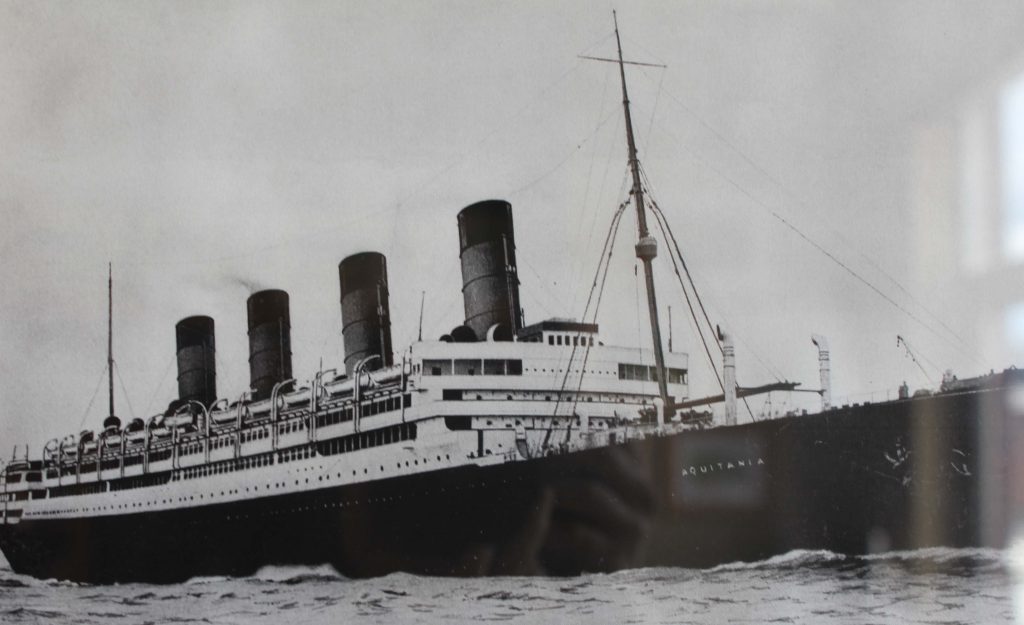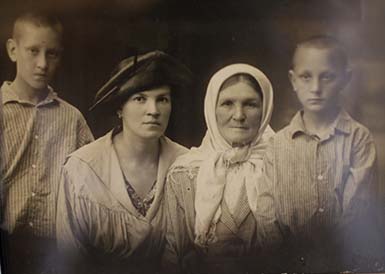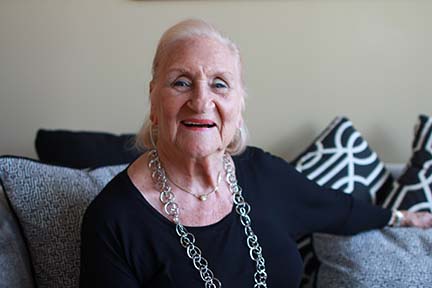On September 11 at the Asheville JCC, Lisa Sturz of Red Herring Puppets performed My Grandfather’s Prayers, an adult puppet show based on the life of Sturz’s grandfather, Cantor Izso Glickstein (1890-1947). Glickstein was a Jewish Ukrainian prodigy and immigrant whose powerful voice gave expression to the victims of the violent Jewish Diaspora of the twentieth century. My Grandfather’s Prayers explores themes of adversity, secular ambition vs. religious devotion, the imprint of our ancestors, anti-Semitism, cultural identity vs. faith, refugees in crisis and their inherent gifts, and the power of art to connect, differentiate and transcend.
My Grandfather’s Prayers is a powerful combination of intricately rendered watercolor landscapes, shadow puppets, Czech-style marionettes, recordings of Cantor Izso Glickstein from the 1920’s, rhymed narration, ancient Hebrew chants, and Jewish folk music. The overall effect is of a world where history, dream, and spirituality interweave.
The following is an interview with an audience member who attended Sturz’s performance. Sophie Steinberg is 94 years old and a first generation immigrant from Russia. She remembers the stories her mother told of witnessing the pogroms before she fled with her children to America. In the interview, Sophie Steinberg shares her family’s story and her reaction to Sturz’s artistic rendering of Izso Glickstein’s biography.
Can you talk about the parallels between your family’s immigration story and Izso Glickstein’s story? When did your family immigrate and how did the gifts or skills they possessed help them survive crisis?
I was born in Russia. I was a year old when I came here. My father died before I was born, so my mother came here by herself with three children. Four of my mother’s siblings were already in America in Baltimore. My mother’s brother was a cabinet-maker here, a very good one, and he was our sponsor. We had to have a sponsor to be able to come over. In 1922 my uncle had 10,000 dollars, and back then that was a lot of money. He had to prove that he could support us. It took us 7 months to get here because we were kept in Liverpool. Then, we were also kept in Ellis Island for a long time before they released us. When we were released, we went to Baltimore where my mother got a house. She worked hard dress making to keep us going. We had a lot of family near us, aunts and uncles and cousins. They all had talent and skills in the tailoring field. They were able to get work in designing, cutting or sewing. There was a textiles factory in Baltimore that hired a lot of my relatives. That’s how we survived.
 The Aquitania brought Sophie and her family to America in 1923
The Aquitania brought Sophie and her family to America in 1923
Lisa Sturz uses an artistic type of story telling to tell her Grandfather’s story. How did your family share and immortalize stories about your family?
My mother lived until she was 85, and my children and grandchildren got the story from her. The story was handed down and we all have different memories of the story from what my mother told us. You know, my family gets together for family reunions every summer in one house. It was my turn to plan the reunion this past year. My theme was “From Russia with Love.” I got the film Fiddler on the Roof and showed it to everyone so we could keep the past familiar by talking about it. My son is very talented. He made a video with family photos and it was great to have it to talk about our history and see how it made us who we are. Lisa Sturz used puppets to tell her story. I think using art is great for telling the story. People can really feel what it was like that way. They can relate to it. At times the performance was really dark, the lighting. There was a lot of emotion.
 Sophie’s grandmother, mother, and brothers
Sophie’s grandmother, mother, and brothers
What was it like for you personally watching My Grandfather’s Prayers?
The performance started with the Pogrom period, which of course set me off thinking of my past because that’s when my mother left Russia. My parents had a business, a dry goods store, and the business was pillaged. Seeing the opening of the puppet show brought back memories of the stories I’d heard of what my parents went through. I wondered how many people in the audience knew what I felt. I was probably the oldest person there. It meant a lot for me to see it. I’ve told my story to my children and grandchildren so they could understand how lucky they are to be in America. More people should see My Grandfather’s Prayers, especially young people It’s important for them to see what it means to be uprooted and pushed around. That’s a big thing for me.
Artist and puppeteer Lisa Sturz is working with Hatchfund, a non-profit organization for artists, to raise money for My Grandfather’s Prayers. Hatchfund is a juried site that only accepts artists who have had some national acclaim and whose work meets their standards. They assign staff to work with the artist throughout the funding process. Please show your support for Lisa’s important work and her efforts to tell her grandfather’s important story. All donations to Sturz’s Hatchfund project are tax-deductible. Any level of support is appreciated. Support My Grandfather’s Prayers HERE.






